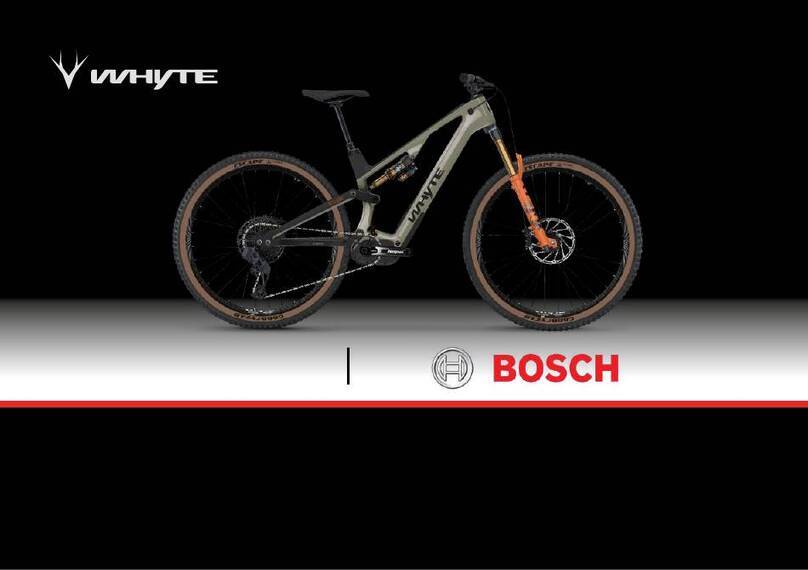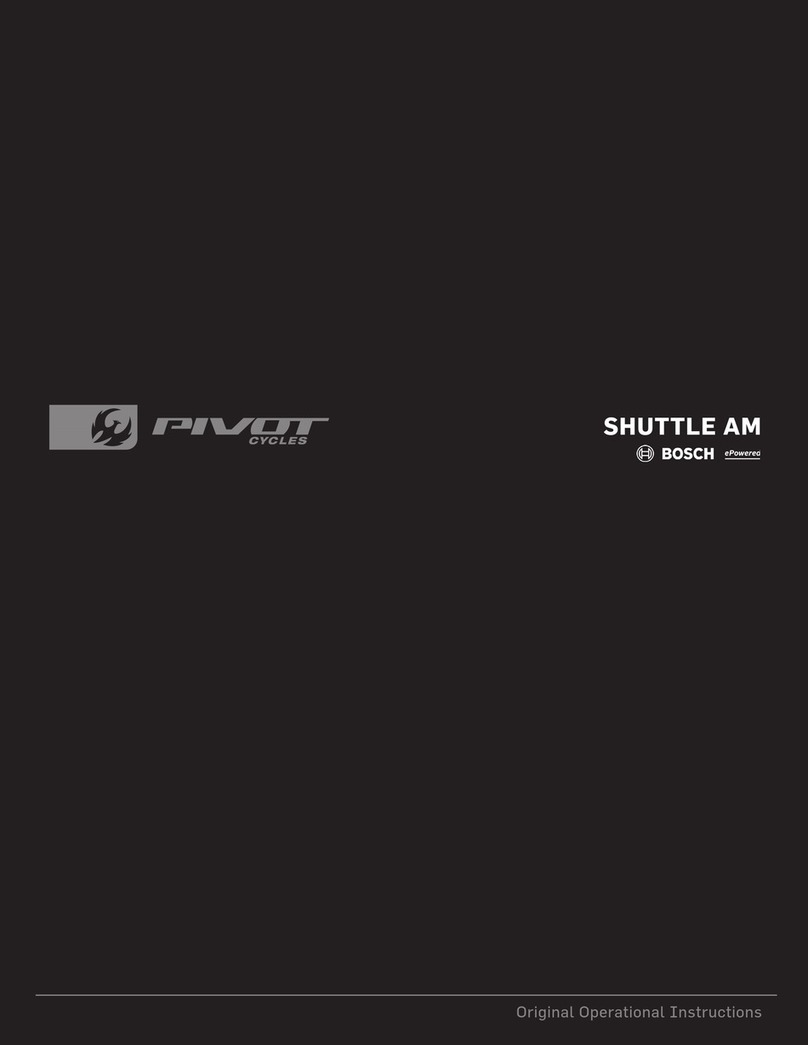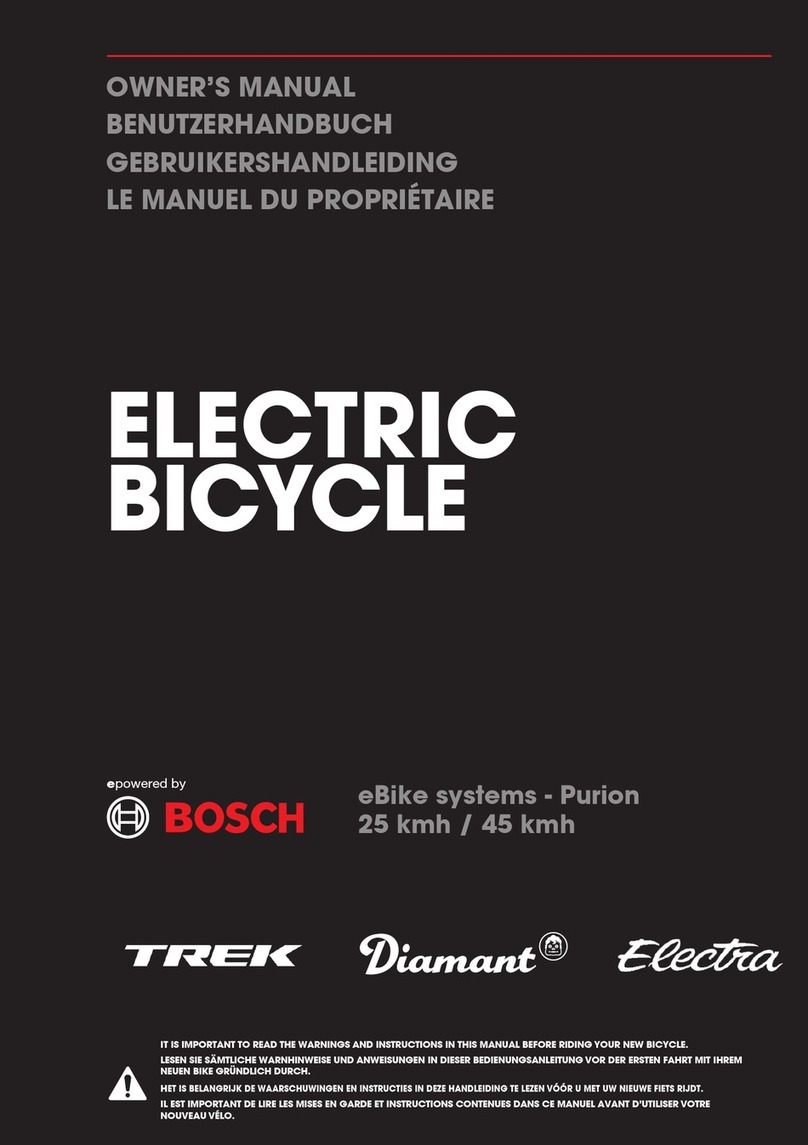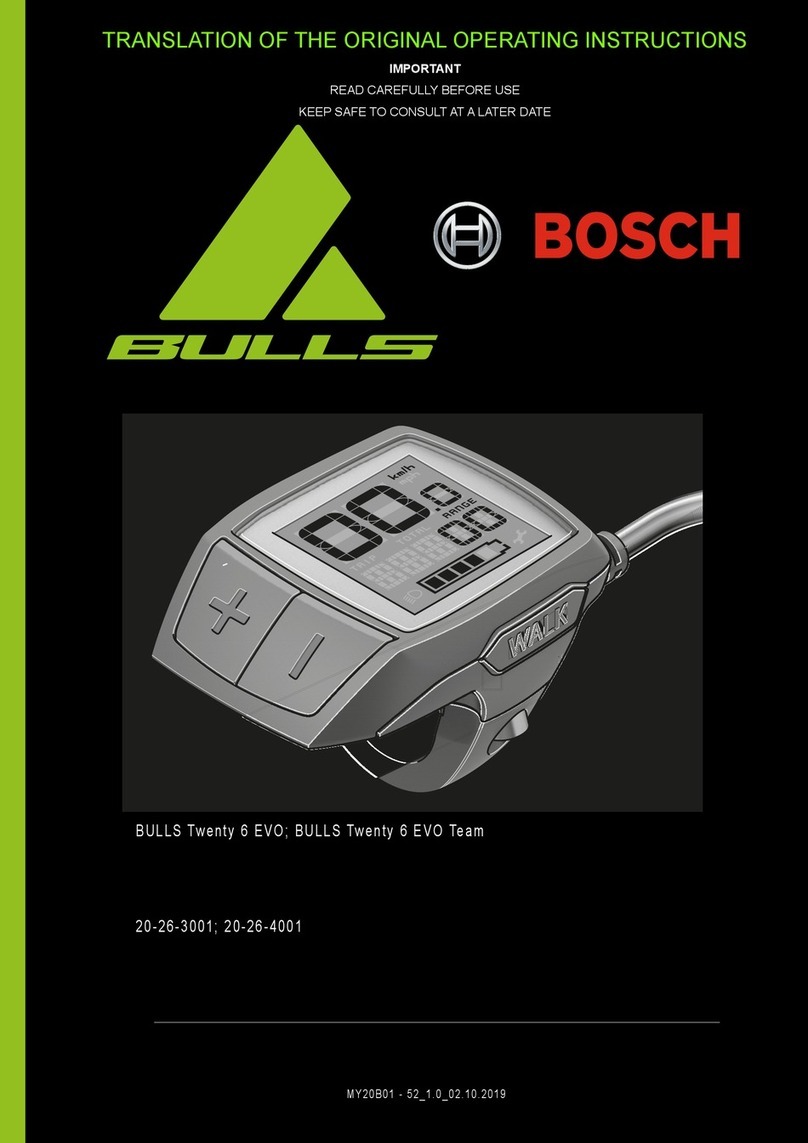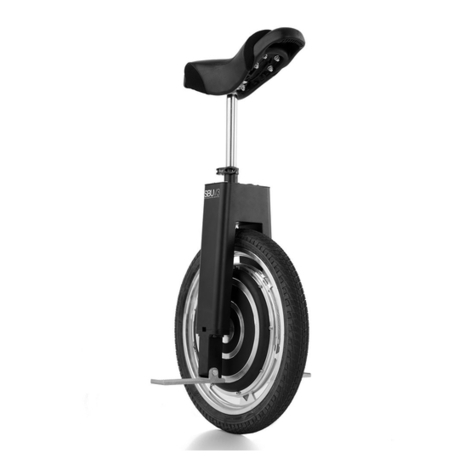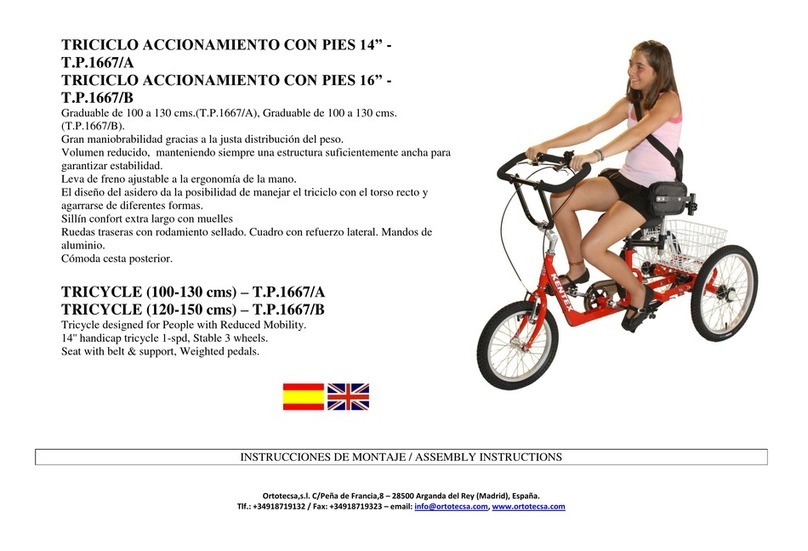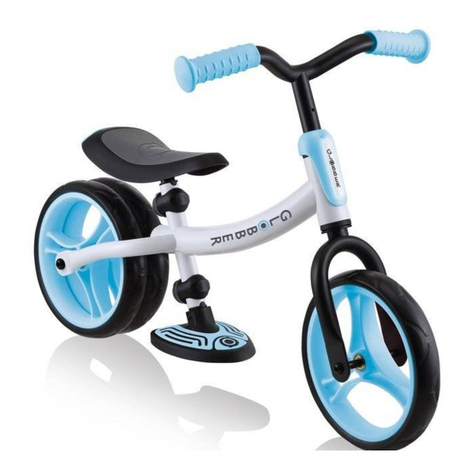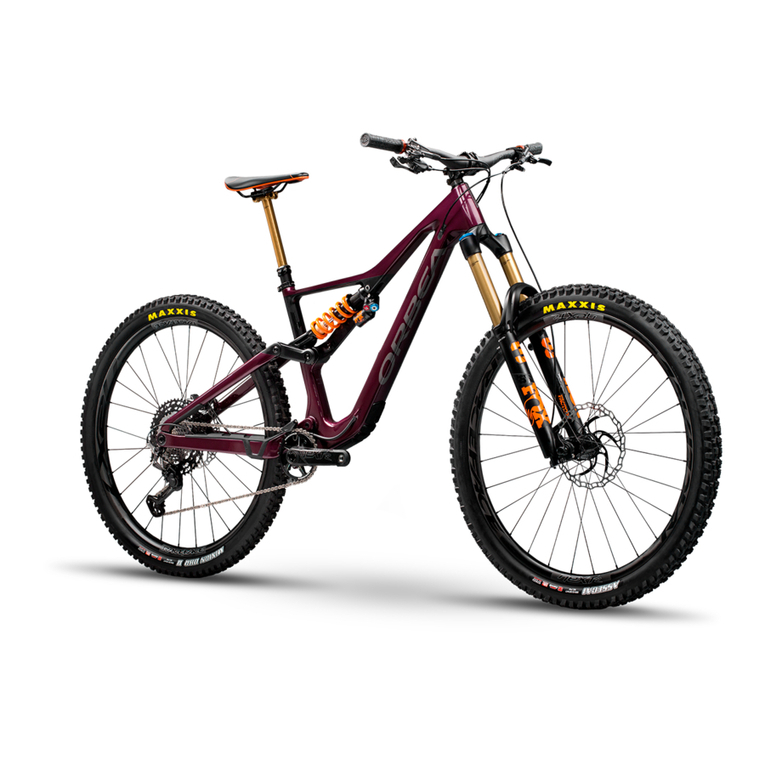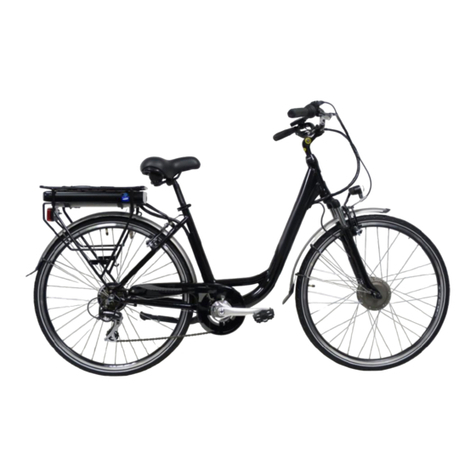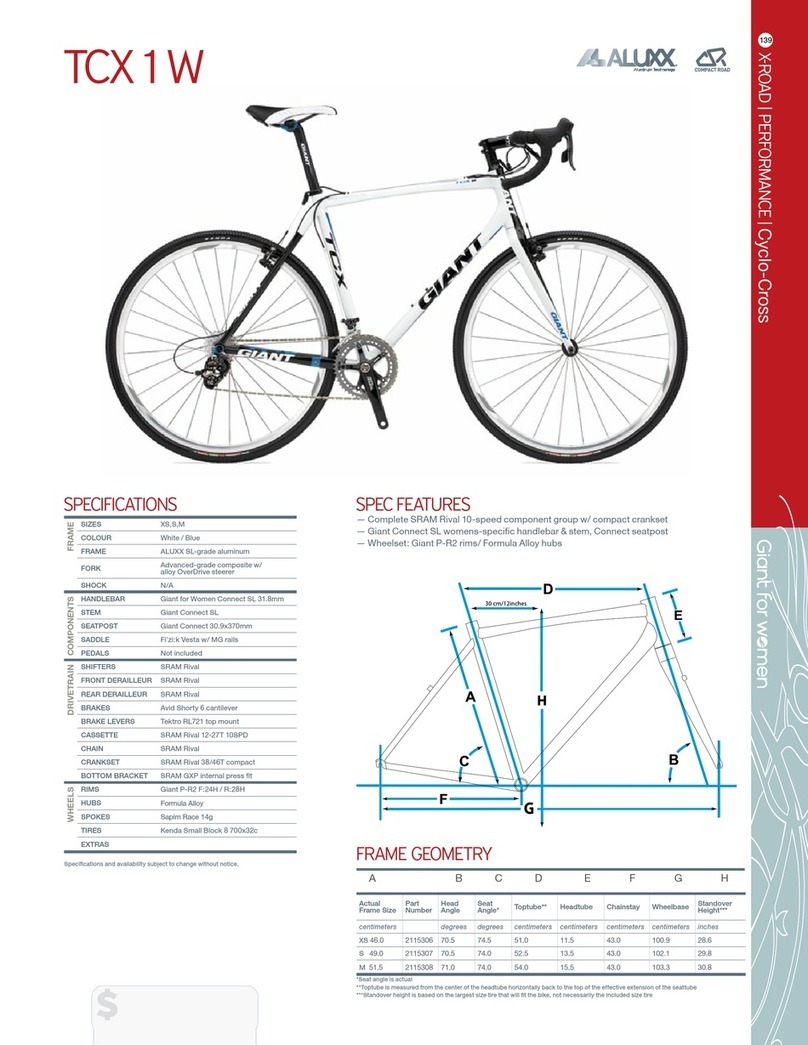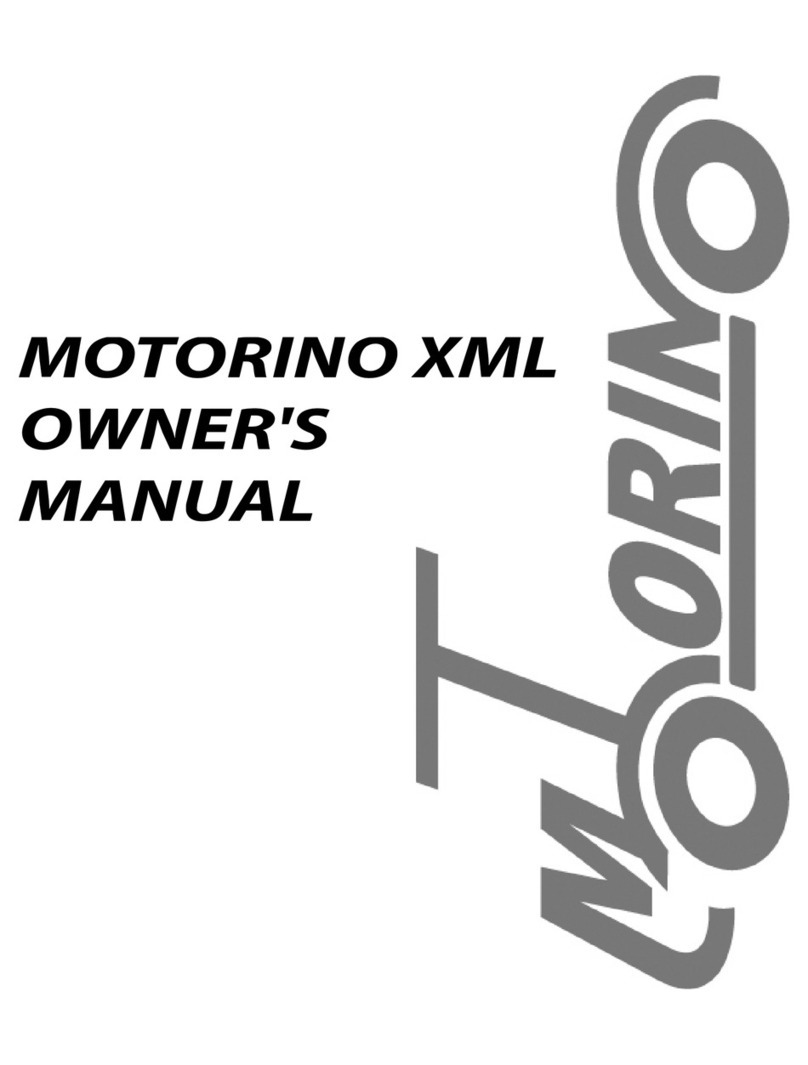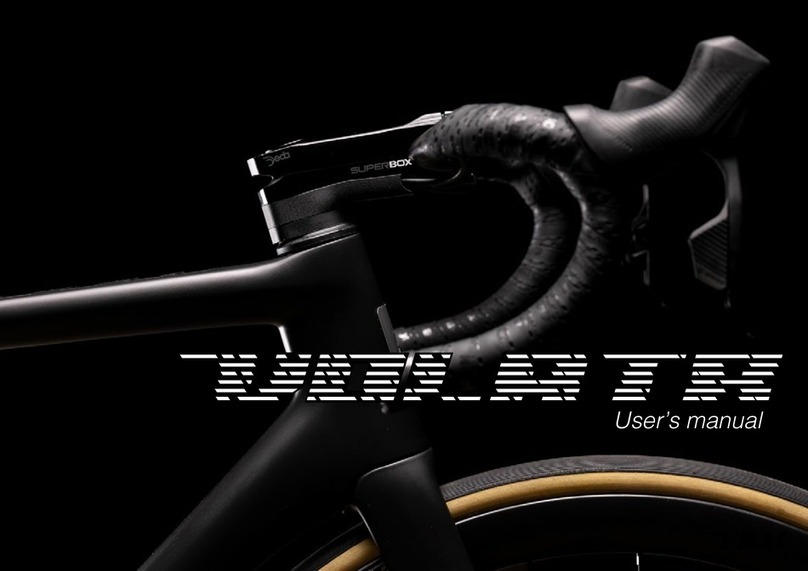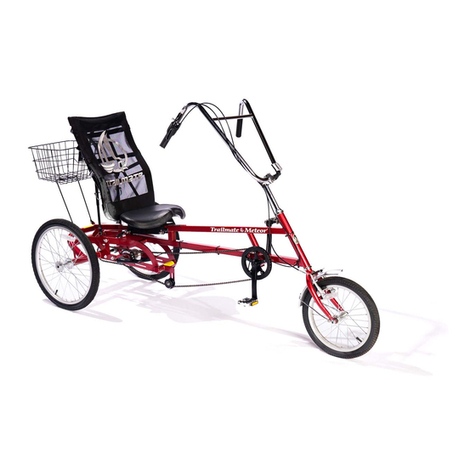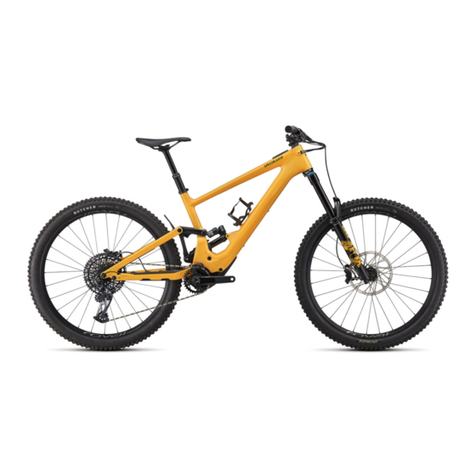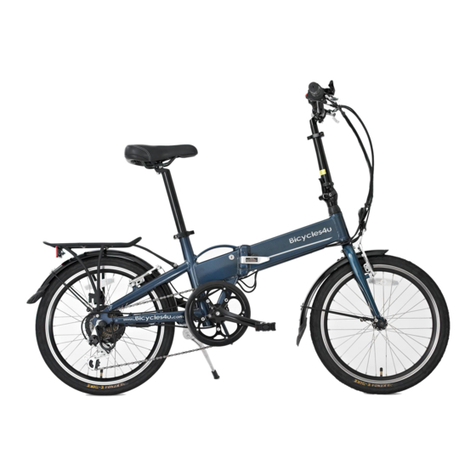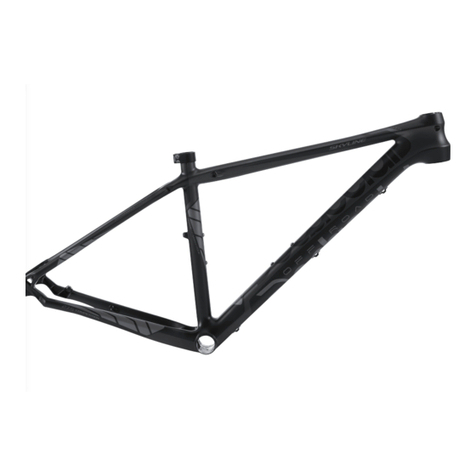Bosch ZEMO SU-E FS 12 Wiring diagram

MY22Z01 - 12_1.0_25.07.2022
TURBO
SPORT
TOUR
ECO
OFF
MPH
KM/H
Reichweite
AMM
PMWH
MIN
MPH
KM /H
RESET
TURBO
SPOR T
S
TOUR
ECO
OFF
MPH
KM/H
Reichweite
AMM
P MWH
MIN
MPH
KM
/H
21-17-3234…21-17-3237, 22-15-2057…22-15-2062
SU-E FS 12, ZE 10, ZE 5F, ZE 5F Plus, ZE 5R, ZE 5R Plus
Translation of original operating instructions
for ZEMO pedelecs with BOSCH Intuvia
on-board computer
IMPORTANT
READ CAREFULLY BEFORE USE
KEEP SAFE TO CONSULT AT A LATER DATE

MY22Z01 - 12_1.0_25.07.2022 1
Contents
Contents
1 About these operating instructions
1.1 Manufacturer 11
1.2 Laws, standards and directives 11
1.3 Language 11
1.4 For your information 11
1.4.1 Warnings 11
1.4.2 Markups 11
1.5 Aim of the operating instructions 12
1.6 Type number and model 13
1.7 Frame number 13
1.8 Identifying the operating instructions 13
2 Safety
2.1 Residual risk 14
2.1.1 Risk of fire and explosion 14
2.1.2 Electric shock 16
2.1.2.1 Damage 16
2.1.2.2 Water penetration 16
2.1.2.3 Condensation 16
2.1.3 Risk of a crash 16
2.1.3.1 Incorrect quick release setting 16
2.1.3.2 Incorrect tightening torque 16
2.1.3.3 Incorrect component 16
2.1.4 Risk of amputation 16
2.1.5 Key breaking off 16
2.2 Toxic substances 17
2.2.1 Carcinogenic substances 17
2.2.2 Toxic substances 17
2.2.3 Irritants and corrosive substances 17
2.3 Requirements for the pedelec rider 18
2.4 Vulnerable groups 18
2.5 Personal protective equipment 18
2.6 Safety guards 18
2.7 Safety markings and safety instructions 19
2.8 What to do in an emergency 19
2.8.1 Dangerous situation in road traffic 19
2.8.2 Leaked brake fluid 19
2.8.3 Battery vapour emission 20
2.8.4 Battery fire 20
2.8.5 Oil and lubricant leaks from the rear frame damper 20
2.8.6 Oil and lubricant leaks from the fork 20
3 Description
3.1 Proper use 21
3.1.1 Improper use 22
3.1.2 Permitted total weight (PTW) 23
3.1.3 Environmental requirements 24
3.2 Nameplate 26
3.3 Components 27
3.3.1 Overview 27
3.3.2 Chassis 28
3.3.2.1 Frame 28
3.3.2.2 Steering system 28
3.3.2.3 Steering headset 28
3.3.2.4 Stem 28

MY22Z01 - 12_1.0_25.07.2022 2
Contents
3.3.2.5 Handlebars 29
3.3.2.6 Fork 29
3.3.3 Suspension 30
3.3.3.1 Rigid fork 30
3.3.3.2 Suspension fork 30
3.3.4 Wheel 34
3.3.4.1 Tyres 34
3.3.4.2 Tube-type tyre 34
3.3.5 Braking system 37
3.3.5.1 Mechanical brake 37
3.3.5.2 Hydraulic brake 37
3.3.5.3 Disc brake 38
3.3.6 Saddle 39
3.3.7 Seat post 39
3.3.7.1 Patent seat post 39
3.3.7.2 Suspension seat post 40
3.3.8 Mechanical drive system 41
3.3.8.1 Chain drive layout 41
3.3.8.2 Belt drive layout 41
3.3.9 Electric drive system 42
3.3.9.1 Motor 42
3.3.9.2 Rechargeable battery 42
3.3.9.3 Frame battery 43
3.3.9.4 Pannier rack battery 43
3.3.9.5 Integrated battery 44
3.3.9.6 Charger 44
3.3.10 Lighting 44
3.3.11 On-board computer 45
3.3.11.1 USB port 45
3.3.12 Control panel 45
3.4 Description of controls and screens 46
3.4.1 Handlebars 46
3.4.2 On-board computer 47
3.4.2.1 Riding light indicator 47
3.4.2.2 Level of assistance indicator 47
3.4.2.3 Charge level indicator (on-board computer) 48
3.4.2.4 Indicator for motor power used 48
3.4.2.5 Gear recommendation indicator 48
3.4.2.6 Tachometer indicator 48
3.4.2.7 Function display 48
3.4.2.8 Journey information 49
3.4.2.9 Additional journey information 49
3.4.2.10 System settings and data 50
3.4.2.11 Additional system settings 50
3.4.2.12 System message 51
3.4.3 Control panel 52
3.4.4 Gear shift 53
3.4.4.1 SHIMANO derailleur gears 53
3.4.5 Handbrake 54
3.4.6 Fork lock 55
3.4.6.1 SR Suntour 55
3.4.7 Battery level indicator (battery) 56
3.4.7.1 Battery level indicator (battery) 56
3.5 Technical data 57
3.5.1 Pedelec 57
3.5.2 Emissions 57
3.5.3 BOSCH Intuvia on-board computer 57
3.5.4 USB port 57
3.5.5 BOSCH Performance Line CX motor 57

MY22Z01 - 12_1.0_25.07.2022 3
Contents
3.5.6 Battery BOSCH PowerTube 625 57
3.5.7 Bicycle lighting 57
3.5.8 Torque 58
4 Transporting and storing
4.1 Weight and dimensions for transportation 65
4.2 Designated handles, lifting points 65
4.3 Transportation 66
4.3.1 Using the transport securing system 66
4.3.2 Transporting the pedelec 66
4.3.3 Shipping a pedelec 66
4.3.4 Transporting the battery 66
4.3.5 Shipping the battery 66
4.4 Storing 67
4.4.1 Storage mode 67
4.4.2 Break in operation 67
4.4.2.1 Preparing a break in operation 67
4.4.2.2 Carrying out a break in operation 67
5 Assembly
5.1 Unpacking 68
5.2 Required tools 68
5.3 Commissioning 69
5.3.1 Checking the battery 69
5.3.2 Preparing the battery 70
5.3.2.1 Retrofitting the PowerTube adapter 70
5.3.2.2 Fit battery cover onto Bosch PowerTube 625 battery (horizontal) 71
5.3.2.3 Fit battery cover onto Bosch PowerTube 500 battery (horizontal) 72
5.3.2.4 Securing the PowerTube BS2 battery mount 73
5.3.3 Preparing the wheel 78
5.3.4 Installing the wheel in the SUNTOUR fork 79
5.3.4.1 Screw-on axle (12AH2 and 15AH2) 79
5.3.4.2 20 mm cross axle 80
5.3.4.3 Q-LOC quick release 82
5.3.5 Preparing the LIMOTEC seat post 83
5.3.6 Fitting the pedals 84
5.3.7 Checking the stem and handlebars 85
5.3.7.1 Checking the connections 85
5.3.7.2 Checking stem is firmly in position 85
5.3.7.3 Checking the bearing clearance 85
5.4 Selling the pedelec 85
6 Operation
6.1 Risks and hazards 86
6.2 Tips for a greater range 88
6.3 Error message 89
6.3.1 On-board computer 89
6.3.2 Rechargeable battery 91
6.4 Instruction and customer service 92
6.5 Adjusting the pedelec 92
6.5.1 Preparing 92
6.5.2 Pedelec adjustment procedure 93
6.5.3 Determining the sitting position 94
6.5.3.1 Straighten saddle 95
6.5.3.2 Positioning the saddle with eightpins suspension seat post 95
6.5.3.3 Adjusting the saddle height 96
6.5.3.4 Setting the saddle height with the remote control 97
6.5.3.5 Adjusting the saddle position 98

MY22Z01 - 12_1.0_25.07.2022 4
Contents
6.5.3.6 Adjusting the saddle tilt 98
6.5.3.7 Checking saddle stability 98
6.5.4 Handlebars 99
6.5.4.1 Replace handlebars 99
6.5.4.2 Adjusting the handlebar width 99
6.5.4.3 Adjusting the hand position 99
6.5.4.4 Adjusting the handlebars 100
6.5.5 Stem 101
6.5.5.1 Replacing the handlebars 101
6.5.5.2 Adjusting the handlebar height with quick release 101
6.5.5.3 Checking the stem stability 101
6.5.5.4 Adjusting the quick release clamping force 101
6.5.5.5 Setting the quill stem 102
6.5.5.6 Adjusting the Ahead stem 102
6.5.5.7 Adjusting the angle-adjustable stem 103
6.5.6 Handles 104
6.5.6.1 Replacing the handles 104
6.5.6.2 Adjusting ergonomic handles 104
6.5.6.3 Checking handlebar stability 104
6.5.7 Tyres 105
6.5.7.1 Adjust tyre pressure 105
6.5.7.2 Replacing tyres 106
6.5.8 Brake 107
6.5.8.1 Change handbrake position 107
6.5.8.2 Change handbrake inclination angle 107
6.5.8.3 Determining the grip distance 108
6.5.8.4 Grip distance on a MAGURA disc brake lever 109
6.5.8.5 Pressure point on a MAGURA brake lever 110
6.5.8.6 Replacing brakes 111
6.5.8.7 Retracting the brake linings 111
6.5.9 Gear shift 112
6.5.9.1 Replacing the gear shift 112
6.5.9.2 Adjusting the SHIMANO shifter 112
6.5.10 Suspension 113
6.5.11 Fork sag 113
6.5.11.1 Adjusting the SR SUNTOUR fork steel suspension 114
6.5.11.2 Adjusting the SR SUNTOUR fork air suspension 115
6.5.12 Fork rebound damping 116
6.5.12.1 Adjusting the SR SUNTOUR fork rebound damping 117
6.5.13 Riding light 118
6.5.13.1 Adjusting the headlight 119
6.5.14 Adjust on-board computer 120
6.5.14.1 Attaching the on-board computer 120
6.5.14.2 Removing the on-board computer 120
6.5.14.3 Attaching the on-board computer 120
6.5.14.4 Securing the on-board computer against removal 120
6.5.14.5 Charging the on-board computer battery 121
6.5.14.6 Changing the system settings 121
6.6 Accessories 122
6.6.1 Child seat 122
6.6.2 Trailer 123
6.6.2.1 Approval for trailer with Enviolo hub 123
6.6.2.2 Approval for trailer with ROHLOFF hub 124
6.6.3 Mobile holder 124
6.6.4 Tubeless and airless tyres 124
6.6.5 Suspension fork coil spring 124
6.6.6 Pannier rack 125
6.6.7 Panniers and cargo boxes 125
6.7 Personal protective equipment and accessories for road safety 126

MY22Z01 - 12_1.0_25.07.2022 5
Contents
6.8 Before each ride 126
6.9 Straightening the quickly adjustable stem 127
6.10 Using the pannier rack 127
6.11 Raising the kickstand 128
6.12 Using the saddle 128
6.12.1 Using the leather saddle 128
6.13 Using the pedals 128
6.14 Using the bell 128
6.15 Using the handlebars 129
6.15.1 Using multi-position handlebars 129
6.15.2 Using bar ends 129
6.15.3 Using leather handles 129
6.16 Using the battery 130
6.16.1 Frame battery 130
6.16.1.1 Removing the frame battery 130
6.16.1.2 Inserting the frame battery 130
6.16.2 Pannier rack battery 130
6.16.2.1 Removing the pannier rack battery 130
6.16.2.2 Inserting the pannier rack battery 130
6.16.3 Integrated battery 131
6.16.3.1 Removing the integrated battery 131
6.16.3.2 Inserting the integrated battery 131
6.16.4 Charging the battery 132
6.16.5 Charging the dual battery 132
6.16.5.1 Charging process when two batteries are used 132
6.16.5.2 Charging process when one battery is used 132
6.16.6 Using double battery model with a single battery only 133
6.16.7 Waking the battery 133
6.17 Using pedelec with the electric drive system 134
6.17.1 Switching on the electric drive system 134
6.17.2 Switching off the electric drive system 134
6.18 Using the on-board computer 135
6.18.1 Using the USB port 135
6.18.2 Switching on the on-board computer 135
6.18.3 Switching off the on-board computer 135
6.18.4 Using the push assist system 136
6.18.5 Using the riding light 136
6.18.6 Selecting the level of assistance 136
6.18.7 Journey information 136
6.18.7.1 Switching the displayed journey information 136
6.18.7.2 Resetting the journey information 136
6.19 Using the brake 137
6.19.1 Use handbrake 137
6.19.2 Using the back-pedal brake 137
6.20 Use suspension and damping 138
6.20.1 Adjusting the SR SUNTOUR compression adjuster 139
6.21 Gear shift 140
6.21.1 Using the derailleur gears 140
6.21.2 Use SHIMANO hub gear 141
6.21.3 Using eShift 142
6.21.3.1 Using eShift with SHIMANO DI2 automatic hub gears 142
6.21.3.2 Using eShift with manual SHIMANO DI2 hub gears 142
6.21.3.3 Using eShift with SHIMANO DI2 automatic hub gears 142
6.22 Parking 143
6.22.1 Screwing in the quickly adjustable stem 144
7 Cleaning, servicing and inspection
7.1 Before each ride 149
7.1.1 Checking the guards 149

MY22Z01 - 12_1.0_25.07.2022 6
Contents
7.1.2 Checking the frame 149
7.1.3 Checking the fork 149
7.1.4 Checking the rear frame damper 149
7.1.5 Checking the pannier rack 149
7.1.6 Checking the mudguards 149
7.1.7 Check wheel concentricity 149
7.1.8 Checking the quick releases 149
7.1.9 Checking the suspension seat post 150
7.1.10 Checking the bell 150
7.1.11 Checking the handles 150
7.1.12 Checking the USB cover 150
7.1.13 Checking the riding light 150
7.1.14 Checking the brake 150
7.2 After each ride 151
7.2.1 Cleaning the riding light and reflectors 151
7.2.2 Cleaning the suspension fork 151
7.2.3 Caring for the suspension fork 151
7.2.4 Cleaning the pedals 151
7.2.5 Cleaning the brake 151
7.2.6 Cleaning the suspension seat post 151
7.2.7 Cleaning the rear frame damper 151
7.3 Basic cleaning 152
7.3.1 Clean on-board computer and control panel 152
7.3.2 Cleaning the battery 152
7.3.3 Cleaning the motor 152
7.3.4 Clean Frame, fork, pannier rack, guards and kickstand 153
7.3.5 Cleaning the stem 153
7.3.6 Cleaning the handlebars 153
7.3.7 Clean handles 153
7.3.7.1 Cleaning leather handles 153
7.3.8 Clean seat post 153
7.3.9 Cleaning the saddle 154
7.3.9.1 Cleaning the leather saddle 154
7.3.10 Cleaning the tyres 154
7.3.11 Cleaning the spokes and spoke nipples 154
7.3.12 Clean hub 154
7.3.13 Cleaning the switching elements 154
7.3.13.1 Cleaning the shifter 154
7.3.14 Clean cassette, chain wheels and front derailleur 154
7.3.15 Clean brake 155
7.3.15.1 Clean handbrake 155
7.3.16 Cleaning the brake disc 155
7.3.17 Cleaning the belt 155
7.3.18 Cleaning the chain 155
7.3.18.1 Clean chain, including all-round chain guard 155
7.4 Servicing 156
7.4.1 Frame 156
7.4.2 Fork 156
7.4.3 Pannier rack 157
7.4.4 Mudguard 157
7.4.5 Servicing the kickstand 157
7.4.6 Stem 157
7.4.7 Handlebars 157
7.4.8 Handle 157
7.4.8.1 Rubber handles 157
7.4.8.2 Leather handle 157
7.4.9 Seat post 158
7.4.9.1 Suspension seat post 158
7.4.9.2 Carbon seat post 158

MY22Z01 - 12_1.0_25.07.2022 7
Contents
7.4.10 Rim 158
7.4.11 Leather saddle 158
7.4.12 Hub 158
7.4.13 Spoke nipples 158
7.4.14 Gear shift 159
7.4.14.1 Rear derailleur articulated shafts and jockey wheels 159
7.4.14.2 Shifter 159
7.4.15 Pedal 159
7.4.16 Caring for the chain 159
7.4.16.1 Caring for the chain and all-round chain guard 160
7.4.17 Caring for the battery 160
7.4.18 Caring for the brake 160
7.4.18.1 Caring for handbrake 160
7.4.19 Lubricating the Eightpins seat post tube 160
7.5 Inspection 161
7.5.1 Checking the wheel 161
7.5.1.1 Checking tyre pressure 161
7.5.1.2 Checking the tyres 163
7.5.1.3 Checking the rims 164
7.5.1.4 Checking the nipple holes 164
7.5.1.5 Checking the nipple well 164
7.5.1.6 Checking the rim hooks 164
7.5.1.7 Checking the spokes 164
7.5.2 Checking the brake system 165
7.5.2.1 Checking the handbrake 165
7.5.2.2 Checking the hydraulic brake system 165
7.5.2.3 Checking the Bowden cables 165
7.5.2.4 Checking the disc brake 166
7.5.2.5 Checking the back-pedal brake 167
7.5.2.6 Checking the rim brake 168
7.5.3 Checking the chain 169
7.5.4 Checking the chain tension 169
7.5.4.1 Check tension in derailleur gears 169
7.5.4.2 Check tension in hub gear 169
7.5.5 Checking the belt for wear 169
7.5.5.1 Rough check 169
7.5.5.2 Check 170
7.5.6 Checking the belt 171
7.5.7 Checking the belt for wear 171
7.5.8 Checking the belt sprockets for wear 171
7.5.9 Check belt tension 171
7.5.9.1 Gates Carbon Drive mobile app 172
7.5.9.2 Gates Krikit tension meter 172
7.5.9.3 ECO tension tester 173
7.5.10 Checking the riding light 174
7.5.11 Checking the stem 175
7.5.12 Checking the handlebars 175
7.5.13 Checking the saddle 175
7.5.14 Checking the seat post 175
7.5.14.1 Checking the derailleur gears 175
7.5.14.2 Checking the hub gear 176
7.5.15 Check gear shift 176
7.5.15.1 Electric gear shift 176
7.5.15.2 Mechanical gear shift 176
7.5.15.3 Checking the derailleur gears 177
7.5.16 Adjusting gear shift 177
7.5.16.1 Adjusting the ROHLOFF hub 177
7.5.17 Adjusting cable-operated gear shift, dual-cable 177
7.5.18 Adjusting Bowden-cable-operated twist grip, dual-cable 178

MY22Z01 - 12_1.0_25.07.2022 8
Contents
7.5.19 Checking kickstand stability 178
8 Inspection and maintenance
8.1 Initial inspection 179
8.2 Major inspection 179
8.3 Component-specific maintenance 179
8.4 Carry out initial inspection 182
8.5 Inspection and maintenance instructions 183
8.5.1 Inspecting the frame 190
8.5.1.1 Inspect the carbon frame 190
8.5.2 Inspecting the pannier rack 190
8.5.3 Inspect and maintain rear frame damper 190
8.5.4 Inspect gear hub 191
8.5.4.1 Adjusting the hub with cone bearing 191
8.5.5 Inspecting the stem 191
8.5.6 Inspect and grease steering headset 191
8.5.7 Inspecting axle with quick release 192
8.5.8 Inspecting the fork 193
8.5.8.1 Inspect the carbon suspension fork 193
8.5.8.2 Inspect the suspension fork 193
8.5.9 Inspecting the seat post 194
8.5.9.1 Inspect carbon seat post 194
8.5.9.2 Inspecting and greasing BY.SCHULZ suspension seat post 195
8.5.9.3 Inspecting and greasing RS SUNTOUR suspension seat post 195
9 Troubleshooting, fault clearance and repair
9.1 Preventing pain 196
9.1.1 Sitting discomfort 197
9.1.2 Pain in hips 197
9.1.3 Backache 197
9.1.4 Pain in shoulders and nape of neck 198
9.1.5 Numb or aching hands 198
9.1.6 Pain in upper thigh 198
9.1.7 Knee pain 199
9.1.8 Pain in the foot 199
9 Troubleshooting, fault clearance and repair
9.1 Troubleshooting and fault clearance 200
9.1.1 Drive system or on-board computer does not start up 200
9.1.2 Error message 200
9.1.3 Assistance function errors 201
9.1.4 Battery error 202
9.1.5 On-board computer error 203
9.1.6 Lighting does not work 203
9.1.7 SR SUNTOUR suspension fork 204
9.1.7.1 Rebound too fast 204
9.1.7.2 Rebounding too slowly 205
9.1.7.3 Suspension too soft on inclines 206
9.1.7.4 Excessively hard damping on bumps 207
9.1.8 Problems with freewheel 208
9.1.9 Problems with hub gear 209
9.1.10 Problems with disc brakes 211
9.1.11 Problems with rim brakes 212
9.1.12 Problems with back-pedal brake 213
9.1.13 RockShox suspension fork 214
9.1.13.1 Rebound too fast 214
9.1.13.2 Rebounding too slowly 215
9.1.13.3 Suspension too soft on inclines 216

MY22Z01 - 12_1.0_25.07.2022 9
Contents
9.1.13.4 Excessively hard damping on bumps 217
9.1.14 Other errors 218
9.2 Repair 219
9.2.1 Original parts and lubricants 219
9.2.2 Repairing the frame 219
9.2.2.1 Removing paint damage on frame 219
9.2.2.2 Removing damage from impact on the carbon frame 219
9.2.3 Repairing the suspension fork 219
9.2.3.1 Removing paint damage on the fork 219
9.2.3.2 Removing damage from impact on the carbon frame 219
9.2.3.3 Repairing the seat post 219
9.2.3.4 Repairing damage from impact on the carbon post seat post 219
9.2.4 Replacing the riding light 220
9.2.5 Adjusting the headlight 220
9.2.6 Checking suspension fork-tyre clearance 220
10 Recycling and disposal
10.1 Guidelines on removal of waste 221
11 Documents
11.1 Assembly report 223
11.2 Inspection and maintenance log 225
11.3 Parts list 229
11.3.1 SU-E FS 12 229
11.3.2 ZE 10 231
11.3.3 ZE 5F 233
11.3.4 ZE 5F Plus 235
11.3.5 ZE 5R 237
11.3.6 ZE 5F Plus 239
11.4 Charger operating instructions 241
12 Glossary
12.1 Abbreviations 253
12.2 Simplified terms 253
13 Appendix
I. Translation of the original EC/EU Declaration of Conformity 254
II. Declaration of conformity for incomplete machine 255
14 Keyword index

MY22Z01 - 12_1.0_25.07.2022 10
About these operating instructions
Thank you for your trust!
ZEMO pedelecs are premium quality bicycles.
You have made an excellent choice. Your
specialist dealer will provide you with guidance
and instruction and assemble your product. Your
specialist dealer will also be happy to assist you in
the future, whether you require maintenance, a
retrofit or repair.
You are receiving these operating instructions
with your new pedelec. Please take time to
become familiar with your new pedelec and follow
the tips and suggestions in the operating
instructions. They will help you to enjoy your
pedelec for a long time to come. We hope you
have fun and wish you well on all of your rides!
Download the operating instructions onto your
phone at the following link, so that you can use
them when you are out riding:
https://www.zemo.com/de/
de/index/download.html.
Copyright
© ZEG Zweirad-Einkaufs-Genossenschaft eG
Distribution or reproduction of these operating
instructions and utilisation or communication of
their content is prohibited unless expressly
approved. Anyone who does not comply with
these restrictions is liable for compensation. All
rights reserved in the event that a patent, utility
model or industrial design is registered.
Subject to internal changes
The information contained in these operating
instructions are the approved technical
specifications at the time of printing. In addition to
the functions described here, the software may be
modified at any time to rectify errors and extend
functions.
Any significant changes are included in a new
published version of the operating instructions.
All changes and new versions of the operating
instructions are published on the following
website:
https://www.zemo.com/de/de/index/
download.html
Editing
Text and images:
ZEG Zweirad-Einkaufs-Genossenschaft eG
Longericher Strasse 2
50739 Köln, Germany
Translation
RKT Übersetzungs- und Dokumentations-GmbH
Bahnhofstrasse 27
78713 Schramberg
Germany
If you have any questions or problems
regarding these operating instructions,
please contact:

MY22Z01 - 12_1.0_25.07.2022 11
About these operating instructions
1 About these operating instructions
1.1 Manufacturer
ZEG Zweirad-Einkaufs-Genossenschaft eG
Longericher Strasse 2
50739 Köln, Germany
Tel.: +49 221 17959 0
Fax: +49 221 17959 31
1.2 Laws, standards and directives
The operating instructions comply with the
essential requirements specified in:
• Machinery Directive 2006/42/EC
• Electromagnetic Compatibility Directive 2014/30/
EU
• ISO 20607:2018 Safety of machinery– Operating
instructions– General drafting principles
• EN 15194:2018 Cycles – Electrically power
assisted cycles – pedelec bicycles
• EN 11243:2016, Cycles – Luggage carriers for
bicycles – Requirements and test methods
• ISO 17100:2016-05 Translation Services –
Requirements for translation services.
1.3 Language
The original operating instructions are written in
German. A translation is invalid without the
original operating instructions.
1.4 For your information
Different markings are used in the operating
instructions to make them easier to read.
1.4.1 Warnings
Warnings indicate hazardous situations and actions.
You will find three categories of warnings in the
operating instructions:
1.4.2 Markups
You will find ten text markups in the operating
instructions:
Text for specialist dealers
Notice on replacing components
Notice on fitness
§
May lead to serious or even fatal injuries if
ignored. Medium-risk hazard.
May lead to minor or moderate injuries if ignored.
Low-risk hazard.
Notice
May lead to material damage if ignored.
Stylised form Use
Italics Glossary term, first mention in
section
Underlined in blue Link
Underlined in grey Cross references
Requirements
Instructions for actions without
specific order
1Instructions for actions in
specified order
Result of the action
SPACED Indicators on the display screen
• Bulleted lists
Only applies to pedelecs
with this equipment
A note beneath the heading
indicates components which can
be used as an option
Table 1: Markups
WARNING
!
CAUTION
!

MY22Z01 - 12_1.0_25.07.2022 12
About these operating instructions
1.5 Aim of the operating instructions
These operating instructions are not a substitute
for personal instruction by the specialist dealer
supplying the bike. These operating instructions
are an integral part of the pedelec. Therefore, if it
is re-sold at a later time, they must be handed
over to the subsequent owner.
These operating instructions are mainly written for
people riding pedelecs.
Paragraphs with a white background are intended
to enable non-professionals to make safe settings
on the pedelec, use it, clean it and identify and
eliminate any faults.
Sections intended for technical staff are
highlighted in blue and marked with a spanner
symbol.
These sections aim to allow trained technical
staff (bicycle mechatronics engineers, bicycle
mechanics or others) to carry out initial
assembly, adjustment, inspection and repair
safely.
Technical staff also need to read all sections for
pedelec riders and operators to ensure they can
provide better customer service.
Always fill out all reports in Section 11.1 and
Section 11.2 when carrying out work.
Section
Rider
Specialist dealer
1About these operating instructions
2Safety
3Description
4 Transporting and storing
5 Assembly
6Operation
7Cleaning, servicing and inspection
8Inspection and maintenance
9.1 Preventing pain
9.2 Troubleshooting and fault clearance
9.2 Repair
10 Recycling and disposal
11 Documents
12 Glossary
13 Appendix
14 Keyword index
Table 2: Target groups-section matrix

MY22Z01 - 12_1.0_25.07.2022 13
About these operating instructions
1.6 Type number and model
These operating instructions are an integral part
of pedelecs with the type numbers:
1.7 Frame number
Each frame has an individual frame number
stamped on it (see Figure 2). The frame number
can be used to associate the pedelec with the
owner. The frame number is the most important
identifier for verifying ownership.
1.8 Identifying the operating
instructions
The operating instructions identification number is
located in bottom left-hand corner of each page.
The identification number is composed of the
document number, the version number and the
release date.
Type no. Model Pedelec type
21-17-3236 ZE 5R, Diamant City and trekking
bicycle
21-17-3237 ZE 5R, Wave City and trekking
bicycle
21-17-3234 ZE 5R Plus, Diamant City and trekking
bicycle
21-17-3235 ZE 5R Plus, Wave City and trekking
bicycle
22-15-2057 ZE 5F, Diamant City and trekking
bicycle
22-15-2058 ZE 5F, Wave City and trekking
bicycle
22-15-2057 ZE 5F Plus, Diamant City and trekking
bicycle
22-15-2058 ZE 5F Plus, Wave City and trekking
bicycle
22-15-2059 ZE 10, Diamant City and trekking
bicycle
22-15-2060 ZE 10, Wave City and trekking
bicycle
22-15-2061 SU-E FS 12, Diamant City and trekking
bicycle
22-15-2062 SU-E FS 12, Wave City and trekking
bicycle
Table 3: Type number, model and pedelec type
Identification number MY22Z01 - 12_1.0_25.07.2022

MY22Z01 - 12_1.0_25.07.2022 14
Safety
2 Safety
2.1 Residual risk
Pedelecs pose the following residual risks:
• Risk of fire and explosion
• Electric shock
• Risk of a crash
• Risk of amputation
• Malfunctions due to Bluetooth®
• Key breaking off
Never charge if there is a critical fault
If a charger is connected to the drive system when
a critical error is reported, the battery may be
damaged permanently and may catch fire.
Connect charger to fault-free electric drive
system only.
Protect against penetrating water
The battery is only protected from spray water.
Penetration by water can cause a short circuit.
The battery may self-ignite and explode.
Never immerse battery in water.
Take battery out of service if you suspect water
has penetrated it.
Avoid heat
Temperatures over 60 °C can also cause liquid to
leak from the battery and the battery will become
damaged. The battery may self-ignite and
explode.
Protect the battery against heat.
Never store next to hot objects.
Never expose battery to continuous direct
sunlight.
Avoid wide temperature fluctuations.
Never use incorrect charger
Chargers with excessive voltage damage
batteries. This may cause a fire or an explosion.
Only use approved batteries to charge.
Prevent short circuit due to interconnection
Metal objects may interconnect the battery's
electrical terminals. The battery may self-ignite
and explode.
Never insert paper clips, screws, coins, keys
and other small parts into the battery.
Place the battery on clean surfaces only.
Prevent charging socket and contacts against
contamination from dirt, sand and similar.
Handling a damaged or faulty battery
Faulty batteries are hazardous goods. These
include
• Cells or batteries which have been identified as
faulty for safety reasons
• Leaked batteries or which have released gas
• Cells or batteries which have sustained external
or physical damage
• Cells or batteries whose safety has not been
tested yet
The safety electronics may fail if the batteries are
damaged or faulty. The residual voltage can
cause a short circuit. The battery may self-ignite
and explode.
Only use and charge the battery and
accessories if they are in perfect condition.
Never open or repair the battery.
Batteries with external damage must be
removed from service immediately.
If a battery is dropped or struck, remove it from
service and keep it under observation for at
least 24 hours.
Contact specialist dealer.
2.1.1 Risk of fire and
explosion

MY22Z01 - 12_1.0_25.07.2022 15
Safety
Storing faulty batteries
Your specialist dealer will dispose of faulty
batteries.
Take faulty batteries to your specialist dealer.
Avoid overheating in the charger
The charger heats up when charging the battery.
If the battery is not allowed to cool down
sufficiently, it can cause a fire or burns to the
hands.
Never use charger on a highly flammable
surface.
Never cover the charger during charging.
Never leave battery unattended during
charging.
Brakes and motors
Cool down overheated brakes and motors
The brakes and the motor may become very hot
during operation. There is a risk of burns or fire in
case of contact.
Never touch the brakes or the motor
immediately after a ride.
Never place the pedelec on a flammable
surface, such as grass or wood, directly after
use.
Store the battery in a safety container in a dry
place as per special regulations
(ADR SV 376, P908) until you dispose of it.
Figure 1: Example of a safety container
Never store near flammable substances.
Dispose of faulty batteries in the correct
manner.

MY22Z01 - 12_1.0_25.07.2022 16
Safety
2.1.2 Electric shock
2.1.2.1 Damage
Damaged chargers, cables and plug connectors
increase the risk of electric shock.
Check the charger, cable and plug connector
before each use. Never use a damaged
charger.
2.1.2.2 Water penetration
If water penetrates into the charger, there is a risk
of electric shock.
Never charge the battery outdoors.
2.1.2.3 Condensation
Condensation may form in the charger and in the
battery when the temperature changes from cold
to hot, causing a short circuit.
Wait until both charger and battery are at room
temperature before connecting them.
2.1.3 Risk of a crash
2.1.3.1 Incorrect quick release setting
Excessively high clamping force will damage the
quick release and cause it to lose its function.
Insufficient clamping force will result in
unfavourable transmission of force. This can
cause components to break. This will cause a
crash with injuries.
Never fasten a quick release using a tool (e.g.
hammer or pliers).
Only use the clamping lever with the specified
set clamping force.
2.1.3.2 Incorrect tightening torque
If a screw is fastened too tightly, it may break. If a
screw is not fastened enough, it may loosen. This
will cause a crash with injuries.
Always observe the indicated tightening torque
on the screw or in the operating instructions.
2.1.3.3 Incorrect component
The wheels are designed exclusively for use with
rim brakes or disc brakes. The wheel may break if
an incorrect brake is used. This will cause a crash
with injuries.
Never use wheel with a different brake.
2.1.4 Risk of amputation
The brake disc in disc brakes is so sharp that it
can cause serious injuries to fingers if they are
inserted into the brake disc openings.
Always keep fingers well away from the
rotating brake discs.
2.1.5 Key breaking off
If you leave a key inserted when riding or
transporting the pedelec, it may break off or the
locking system may open accidentally.
Pull the key from the battery lock.

MY22Z01 - 12_1.0_25.07.2022 17
Safety
2.2 Toxic substances
If substances are released or used which pose a
risk to people and the environment, effective
protective measures must be taken.
Possible hazards, contamination and health
hazards due to:
• Carcinogenic, germ-cell-mutagenic and
reproduction-toxic substances
• Toxic substances
• Irritants (skin, respiratory system) and
corrosive substances
What might happen?
• Serious harmful effects to health
• Threat to life
• Hazard to bystanders due to carry-over and
contamination in the personal environment.
Carcinogenic hazardous substances are
substances which can trigger cancer or promotes
the formation of cancer. They are classified as
categories 1A, 1B and 2 under European
hazardous substances legislation and are labelled
with the H-phrase codes H350/ H350i and H351.
It is essential to carry out a professional risk
assessment and select and use suitable
protective measures due to the serious
consequences for health and the occasionally
long period of time it takes before the disease
manifests itself.
Suspension oil
If you come into contact with the suspension oil in
the fork, the 8pins seat post or the rear frame
damper, it will irritate the respiratory tract and can
cause cancer, sterility and changes to the genetic
make-up of germ cells oil.
Never dismantle the rear frame damper or the
suspension fork.
It is forbidden for pregnant women to carry out
maintenance and cleaning tasks.
Avoid skin coming into contact with suspension
oil.
Toxic substances (also known as poison or toxins)
refer to substances which can cause damage to
living beings if they enter the organism above a
specific low dose. The more the ingested amount
of a toxic substance increases, the greater the
likelihood of damage to health due to poisoning is.
This can lead to death.
Brake fluid
Brake fluid may leak out after an accident or due
to material fatigue. Brake fluid can be fatal if
swallowed or inhaled.
Never dismantle the brake system.
Avoid contact with skin.
Do not inhale vapours.
Suspension oil
The suspension oil in the fork, the 8pins seat post
and the rear frame damper is toxic to the touch.
Never dismantle the rear frame damper or the
suspension fork.
It is forbidden for pregnant women to carry out
maintenance and cleaning tasks.
Avoid skin coming into contact with suspension
oil.
Corrosive substances (also known as corrosives)
destroy living tissue or attack surfaces. Corrosive
substances may be in solid, liquid or gaseous
form.
Irritants are hazardous substances which irritate
the skin and mucous membranes once you come
into contact with them. This may cause
inflammation of the affected areas.
2.2.1 Carcinogenic substances
2.2.2 Toxic substances
2.2.3 Irritants and
corrosive
substances

MY22Z01 - 12_1.0_25.07.2022 18
Safety
Defective battery
Liquids and vapours may leak from damaged or
faulty batteries. Excessively high temperatures
may also cause liquids and vapours to leak from
the battery. Such liquids and vapours can irritate
the airways and cause burns.
Never dismantle the battery.
Avoid contact with skin.
Never inhale vapours.
2.3 Requirements for the pedelec
rider
The pedelec rider must have adequate physical,
motor and mental abilities to ride on public roads.
A minimum age of 14 years is recommended.
2.4 Vulnerable groups
Keep batteries and the charger away from
children and people with reduced physical,
sensory or mental capacities or lacking in
experience and knowledge.
Children and young people must be provided
with comprehensive instructions by a legal
guardian.
2.5 Personal protective equipment
Wear a suitable helmet. The helmet must have
a reflective strip or a light in a clearly visible
colour.
Wear sturdy shoes which are not too tightly
laced.
Wear padded cycling gloves.
Wear clothing which is as bright or
retroreflective as possible. Fluorescent
materials are also suitable. High-visibility
jackets and straps on your upper body ensure
even greater safety. Never wear a skirt. Always
wear trousers which reach down to your ankles
instead.
2.6 Safety guards
Three safety guards on the pedelec protect
pedelec riders against heat, dirt or moving parts:
• Chain or belt guards prevent clothing from being
pulled into the drive train.
• The motor cover on the motor casing protects
against heat.
• Mudguards protect against dirt and water
splashing up from the road
Never remove the guards.
Check the guards on a regular basis.
Take pedelec out of service if a guard is
damaged or missing. Contact specialist dealer.

MY22Z01 - 12_1.0_25.07.2022 19
Safety
2.7 Safety markings and safety
instructions
Pedelec and battery nameplates contain the
following safety markings and safety instructions:
2.8 What to do in an emergency
2.8.1 Dangerous situation in road traffic
If you encounter any hazards or dangers in
road traffic, apply the brake until the pedelec
comes to a halt. The brake acts as an
emergency stop system in such cases.
2.8.2 Leaked brake fluid
Remove those affected from the danger area to
fresh air.
Never leave those affected unattended.
Remove any clothing contaminated with brake
fluid immediately.
Never inhale vapours. Ensure sufficient
ventilation.
Wear gloves and safety gloves as protective
equipment.
Keep unprotected persons away.
Take care with leaked brake fluid as it poses a
slip hazard.
Keep leaked brake fluid away from naked
flames, hot surfaces and sources of ignition.
Avoid contact with skin and eyes.
If inhaled
1Take in fresh air.
2Immediately consult a doctor in case of any
discomfort.
After skin contact
1Wash affected skin with soap and water and
rinse well.
2Remove contaminated clothing.
3Consult doctor in the event of pain or
discomfort.
Symbol Explanation
General warning
Adhere to the instructions for use
Table 4: Meaning of safety markings
Symbol Explanation
Read the instructions
Separate collection of electrical and
electronic devices
Separate collection of ordinary and
rechargeable batteries
Must not be thrown into fire (burning
prohibited)
It is forbidden to open any batteries
Device of protection class II
Only suitable for use indoors
Fuse (device fuse)
EU conformity
Recyclable material
Protect from temperatures above 50 °C
and direct sunlight
Table 5: Safety instructions
max. 50°C
Other manuals for ZEMO SU-E FS 12
1
This manual suits for next models
15
Table of contents
Other Bosch Bicycle manuals

Bosch
Bosch KOGA PACE B05 2020 User manual

Bosch
Bosch Kiox User manual
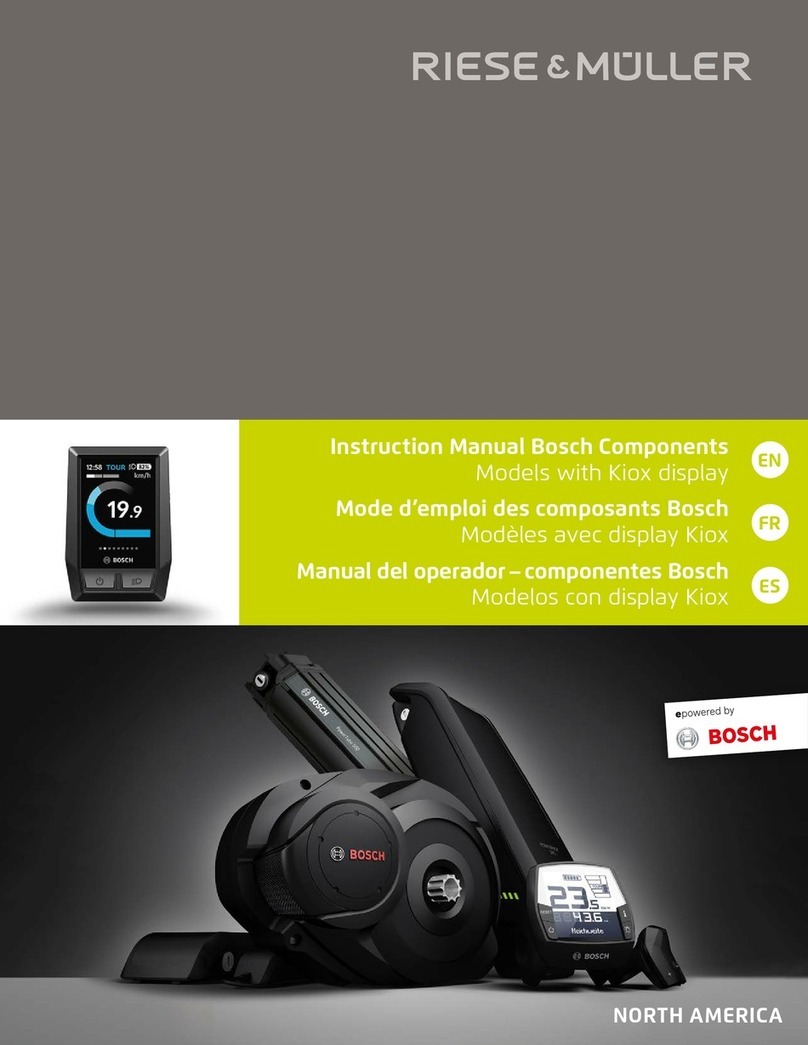
Bosch
Bosch BDU280P CX User manual

Bosch
Bosch Drive System User manual
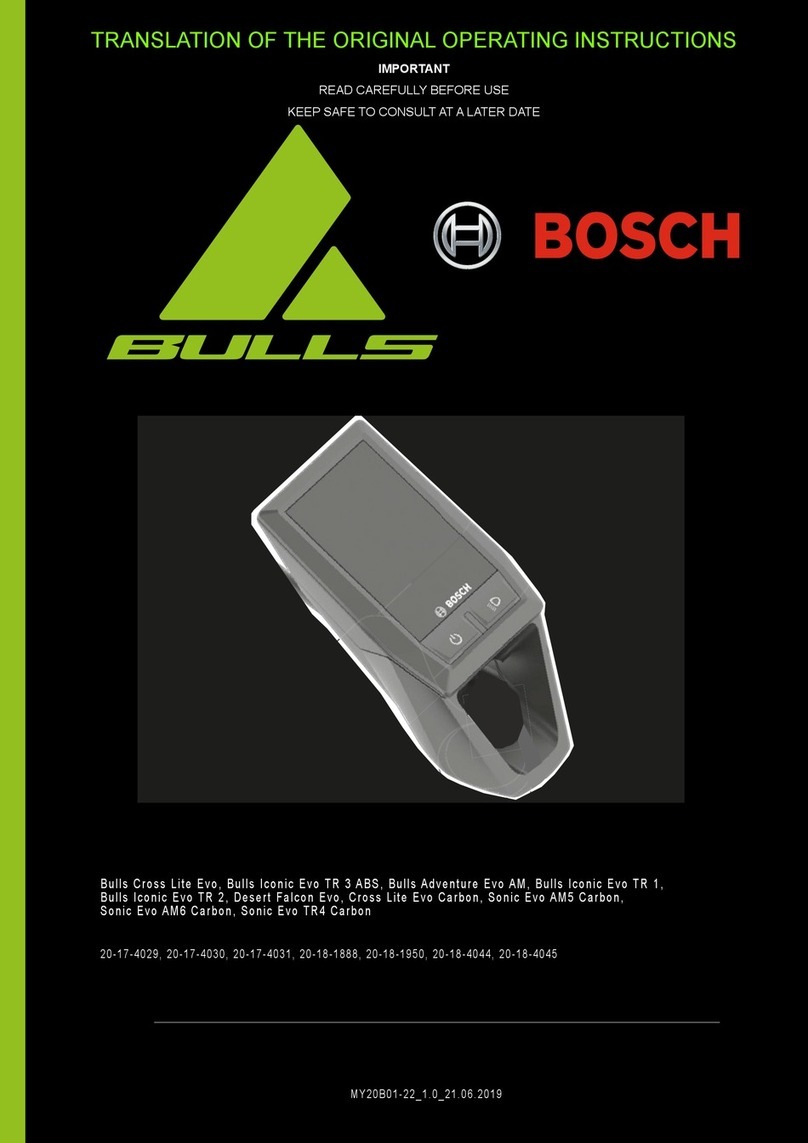
Bosch
Bosch Bulls Cross Lite Evo User manual

Bosch
Bosch BDU336Y User manual

Bosch
Bosch FLYER Mountain Quick start guide

Bosch
Bosch Purion BUI210 User manual
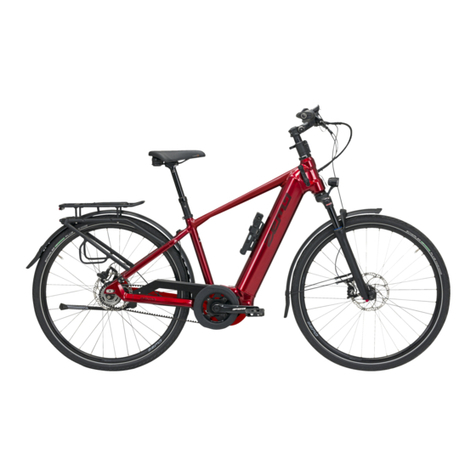
Bosch
Bosch ZEMO SU-E FS 12 Wiring diagram
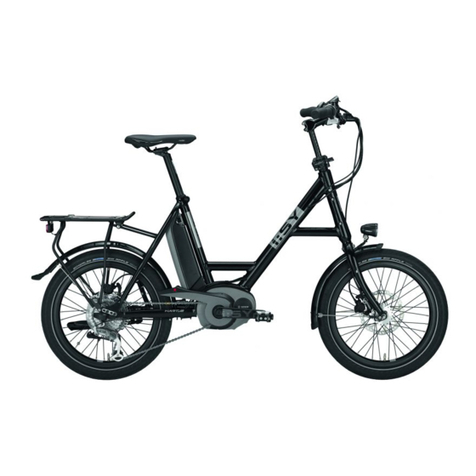
Bosch
Bosch i:SY User manual
